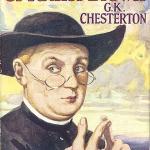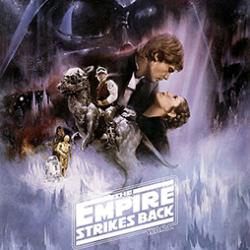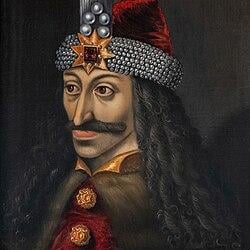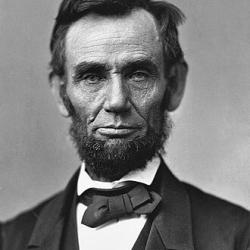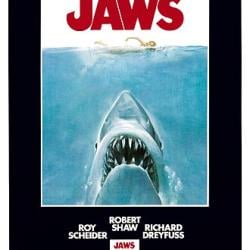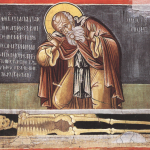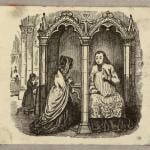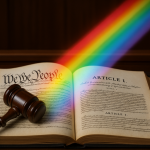1889 is the crossroads where the descendants, living persons and ancestors of previous, current and future influencers meet on the chronological timeline of earth’s history.
Please Note
Wikipedia in which the Catholic Bard quotes directly for all the bio descriptions read in these articles.
This article is part of a series of Notable People Alive In 1889
As I write these words it is the very end of the Christmas season and Hark The Herald Angels Sing is still being sung as we attend Mass. We also belt out We Three Kings which is the first purley written American Christmas Carol by someone who was alive at the same time as Charles Dickens’ son and the ancestor of the man who wrote Rudolph the Red-Nosed Reindeer. Many of the songs from those who were alive in 1889 are now part of the great song book of humanity. You sing them at scout camp around a campfire, hear them sung in older movies and sing along with your grandparents when you belt out a tune you all know. This includes Rock-a-bye Baby, “Take Me Out to the Ball Game“, and classic prayerful hymns such as “How Great Thou Art“. Recently George Gershwin’s Rhapsody in Blue has gone into public domain as of 2025. So take a look and see what songs you can hum along with, others you may not have heard of and learn the names of those who wrote them. Here is the Sound of Music of those who were alive in 1889.
And now….
Born in 1800’s
John Barnett
(July 15, 1802 – April 16, 1890)
He was an English composer and writer on music. In 1834 he published a collection of Lyrical Illustrations of the Modern Poets. His opera The Mountain Sylph – with which his name is nowadays most associated – received a warm welcome when produced at the Lyceum on August 25, 1834, as the first modern English opera, and was given over 100 performances, which was an unusual success. Although The Mountain Sylph is all but forgotten, it inspired parts of Gilbert and Sullivan‘s 1882 Savoy Opera, Iolanthe.
In the short story”Runaround“, a story in Asimov’s I, Robot, a robot, while in a state similar to drunkenness, sings snippets of Gilbert and Sullivan songs, including “The Nightmare Song” from Iolanthe.
Nightmare Song from Gilbert & Sullivan’s Iolanthe ǀ English National Opera
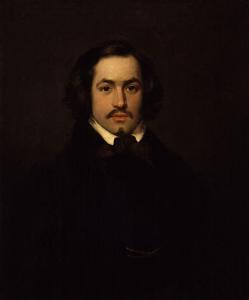
Manuel García (baritone)
(March 17, 1805 – July 1, 1906)
He was a Spanish singer, music educator, and vocal pedagogue. He invented the first laryngoscope.
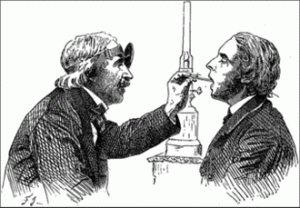
Born in 1810’s
Giuseppe Verdi
(October 9/10, 1813–January 27, 1901)
He was an Italian composer best known for his operas.
In 1889 Verdi contemplated whether or not he should or could complete a particular project he was working on with another guy named Arrigo Boito (February 24, 1842 – June 10, 1918) .On July 10, 1889, he wrote again: “So be it! So let’s do Falstaff! For now, let’s not think of obstacles, of age, of illnesses!” Verdi emphasised the need for secrecy but continued “If you are in the mood, then start to write.” Later he wrote to Boito: “What joy to be able to say to the public: HERE WE ARE AGAIN!!! COME AND SEE US!”
Dan Emmett
(October 29, 1815 – June 28, 1904)
He was an American composer, entertainer, and founder of the first troupe of the blackface minstrel tradition, the Virginia Minstrels. He is most remembered as the composer of the song “Dixie“.
Cecil Frances Alexander
(April 1818 – 12 October 1895)
She was an Anglo-Irish hymnwriter and poet. Amongst other works, she wrote “All Things Bright and Beautiful“, “There is a green hill far away” and the Christmas carol “Once in Royal David’s City“.
Once in Royal David’s City / Carols from King’s 2013
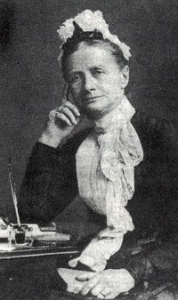
Julia Ward Howe
(May 27, 1819 – October 17, 1910)
She was an American author and poet, known for writing the “Battle Hymn of the Republic” as new lyrics to an existing song, and the original 1870 pacifist Mothers’ Day Proclamation. She was also an advocate for abolitionism and a social activist, particularly for women’s suffrage.
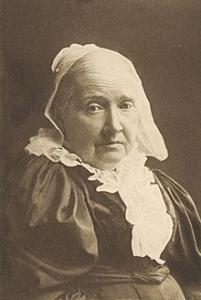
Born in 1820’s
Fanny Crosby
(March 24, 1820 – February 12, 1915)
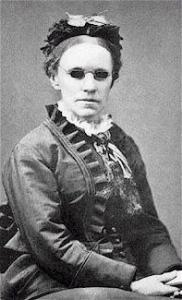
By 1889, Blind Methodist Hymn writer Fanny Crosby may have written over 2500 hymns for the combined publishing houses of Bradbury, and Biglow and Main.
John Henry Hopkins Jr.
(October 28, 1820 – August 14, 1891)
She was an American clergyman and hymnodist, most famous for composing the song “We Three Kings of Orient Are” in 1857 (even though it does not appear in print until his Carols, Hymns, and Songs in 1863).
James Lord Pierpont
(April 25, 1822 – August 5, 1893)
He was an American songwriter, arranger, organist, Confederate States soldier, and composer. Pierpont wrote and composed “Jingle Bells” in 1857, originally titled “The One Horse Open Sleigh”.
He was born in Boston, Massachusetts, and died in Winter Haven, Florida. Although Pierpont is obscure today, his composition “Jingle Bells” has become synonymous with the Christmas holiday and is one of the most performed and most recognizable songs in the world.
Brewster Higley
(November 30, 1823 – December 9, 1911)
He was an otolaryngologist who became famous for writing “My Western Home”. Originally written in 1871 or 1872 and published under the title “My Western Home” in the Smith County Pioneer in the fall of 1873, possibly December, this poem later became the original lyrics for the famous American folk song “Home on the Range“.
Because Higley wrote “Home on the Range” while living in Smith County, Kansas, and because Kansans felt it described their state very well, the Kansas legislature voted to make “Home on the Range” the official state song on April 8, 1947
Johann Baptist Strauss II
(October 25, 1825 – June 3, 1899)
Also known as Johann Strauss Jr., the Younger or the Son He was an Austrian composer of light music, particularly dance music and operettas as well as a violinist. He composed over 500 waltzes, polkas, quadrilles, and other types of dance music, as well as several operettas and a ballet. In his lifetime, he was known as “The Waltz King”, and was largely responsible for the popularity of the waltz in Vienna during the 19th century. Some of Johann Strauss’s most famous works include “The Blue Danube“, “Kaiser-Walzer” (Emperor Waltz), “Tales from the Vienna Woods“, “Frühlingsstimmen“, and the “Tritsch-Tratsch-Polka“. Among his operettas, Die Fledermaus and Der Zigeunerbaron are the best known.
Strauss was the son of Johann Strauss I (March 14, 1804 – September 25, 1849) and his first wife Maria Anna Streim. Two younger brothers, Josef and Eduard Strauss, also became composers of light music, although they were never as well known as their brother.
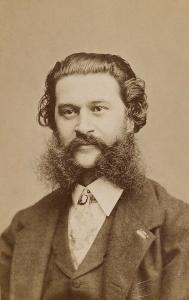
Johann Strauss II – The Blue Danube Waltz
Silent Night Writer’s Kids
Franz Xaver Gruber
(25 November 1787 – 7 June 1863)
He was an Austrian primary school teacher, church organist and composer in the village of Arnsdorf, who is best known for composing the music to “Stille Nacht” (“Silent Night“).
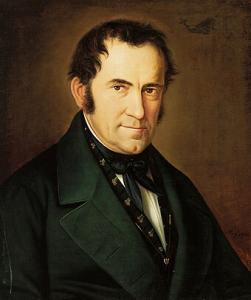
He had some kids with his second wife: Felix (1823-1868) and Franz (1827-1917).
Born in 1830’s
William Francis Allen
(September 5, 1830 – December 9, 1889)
He was an American classical scholar and an editor of the first book of American slave songs, Slave Songs of the United States. reported in 1863 that the formerly enslaved Black Americans sang the song Michael, Row the Boat Ashore as they rowed him in a boat across Station Creek.
One of the songs in the book is “Down in the River to Pray” The most famous version, featured in O Brother Where Art Thou?, uses a pentatonic scale, common in many African American spirituals.
Lewis Redner
(December 15, 1831 – August 29, 1908)
He was an American musician, best known as the composer of the popular Christmas carol “St. Louis”, better known as “O Little Town of Bethlehem“.
Johannes Brahms
(May 7, 1833 – April 3, 1897)
He was a German composer, virtuoso pianist, and conductor of the mid-Romantic period. His music is rooted in the structures and compositional techniques of his Classical (and earlier) forebears, including Ludwig van Beethoven and Johann Sebastian Bach. His compositions include four symphonies, four concertos, a Requiem, and many songs, amongst other music for symphony orchestra, piano, organ, voices, and chamber ensembles. They remain a staple of the concert repertoire.
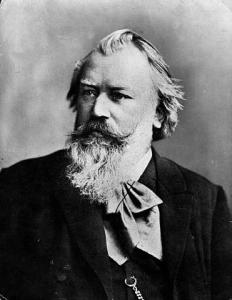
Johannes Brahms — Hungarian Dance No.5 – Hungarian Symphony Orchestra Budapest
Sabine Baring-Gould
(January 28, 1834 – January 2, 1924)
He was an Anglican priest, hagiographer, antiquarian, novelist, folk song collector and eclectic scholar. His bibliography consists of more than 1,240 publications, though this list continues to grow.
He is remembered particularly as a writer of hymns, the best-known being “Onward, Christian Soldiers“, and “Now the Day Is Over”. He also translated the carols “Gabriel’s Message“, and “Sing Lullaby” from Basque to English.
His family home, the manor house of Lew Trenchard, near Okehampton, Devon, has been preserved as he had it rebuilt and was a hotel.
Thomas Brigham Bishop
(June 29, 1835 – May 15, 1905)
He is best known as an American composer of popular music. Various disputed claims have been made by Bishop and others that he authored, or at least contributed to the authorship of, a number of popular 19th-century songs, including John Brown’s Body, When Johnny Comes Marching Home, and Shoo Fly, Don’t Bother Me. Bishop later had an infamous career as a bucket shop proprietor, among other schemes.

Crockett’s Kentucky Mountaineers-Shoo Fly
Charles-Camille Saint-Saëns
(October 9, 1835 – December 16, 1921)
He was a French composer, organist, conductor and pianist of the Romantic era. His best-known works include Introduction and Rondo Capriccioso (1863), the Second Piano Concerto (1868), the First Cello Concerto (1872), Danse macabre (1874), the opera Samson and Delilah (1877), the Third Violin Concerto (1880), the Third (“Organ”) Symphony (1886) and The Carnival of the Animals (1886).
Saint-Saens : The Swan ( Le Cygne ) – Carnival of the Animals – YouTube
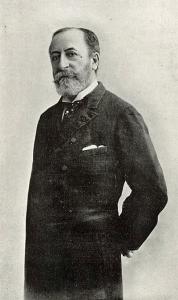
Oleksandr Yakovych Konysky
(August 18, 1836 – December 12, 1900)
He was a Ukrainian interpreter, writer, lexicographer, pedagogue, poet, and civil activist of liberal direction. He had around 150 pen names, including О. Return-freedom (Ukrainian: Верниволя), F. Gorovenko, V. Burkun, Perebendia, and О. Khutorianyn.
By profession he was a lawyer and is known as the author of the text of the Ukrainian spiritual anthem “Prayer for Ukraine“.
William Chatterton Dix
(June 14, 1837 – 9 September 9, 1898)

He was an English writer of hymns and carols which include As with Gladness Men of Old, What Child Is This?, To You, O Lord, Our Hearts We Raise and Alleluia! Sing to Jesus.
Adolphe-Basile Routhie FRSC
(May 8, 1839 – June 27, 1920)
He was a Canadian judge, author, and lyricist. He wrote the lyrics of the original French version of the Canadian national anthem “O Canada“. He was born in Saint-Placide, Quebec, to Charles Routhier and Angélique Lafleur.
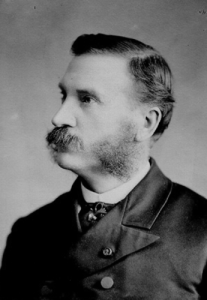
Toronto Symphony Orchestra: “O Canada”
Joseph Eastburn Winner
(c. 1837–1918)
He was an American composer and music publisher. He is best known for his tune “The Little Brown Jug” (1869).
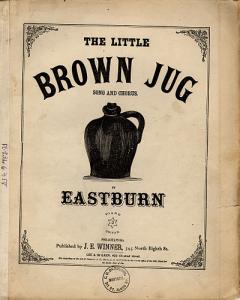
The Little Brown Jug with Bing Crosby
Elisha Albright (E. A.) Hoffman
(May 7, 1839 – November 25, 1929)
He was a Presbyterian minister, composer of over 2,000 hymns and editor of over 50 song books. The son of an Evangelical minister, Hoffman grew up singing sacred hymns both in church and in the home with his parents. After completing high school, Hoffman furthered his education at Union Seminary in New Berlin, Pennsylvania, and was subsequently ordained as a Presbyterian minister in 1873.
Born in 1840’s
Charles Pickard Ware
(c. 1840–1921)
He was an abolitionist and Harvard graduate who had come to supervise the plantations on St. Helena Island from 1862 to 1865, and he wrote down the song Michael, Row the Boat Ashore in music notation as he heard the freedmen sing it.
Pyotr Ilyich Tchaikovsky
(May 7, 1840 – November 6, 1893)
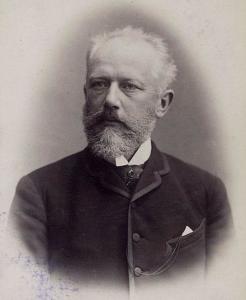
He was a Russian composer during the Romantic period. He was the first Russian composer whose music would make a lasting impression internationally. Tchaikovsky wrote some of the most popular concert and theatrical music in the current classical repertoire, including the ballets Swan Lake and The Nutcracker, the 1812 Overture, his First Piano Concerto, Violin Concerto, the Romeo and Juliet Overture-Fantasy, several symphonies, and the opera Eugene Onegin.
James Ramsey Murray
(1841–1905)
He was an American composer and author including of songbooks. His work includes hymns and Christmas music and was published by Root & Cady as well as S. Brainard Sons. His work includes a popular arrangement of “Away in a Manger“. He helped write “Daisy Deane” in an American Civil War camp.
Pentatonix – Away In A Manger (Official Video)
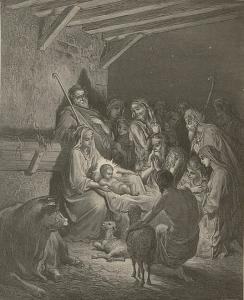
Edvard Hagerup Grieg
(June 15, 1843 – September 4, 1907)
He was a Norwegian composer and pianist. He is widely considered one of the leading Romantic era composers, and his music is part of the standard classical repertoire worldwide. His use of Norwegian folk music in his own compositions brought the music of Norway to fame, as well as helping to develop a national identity, much as Jean Sibelius did in Finland and Bedřich Smetana in Bohemia.
Grieg is the most celebrated person from the city of Bergen, with numerous statues that depict his image and many cultural entities named after him: the city’s largest concert building (Grieg Hall), its most advanced music school (Grieg Academy) and its professional choir (Edvard Grieg Kor). The Edvard Grieg Museum at Grieg’s former home, Troldhaugen, is dedicated to his legacy.
Edvard Grieg: Anitra’s Dance from Peer Gynt Suite • Volker Hartung, conductor
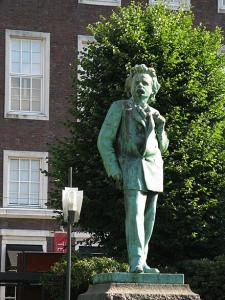
Uncle Jimmy Thompson
(1848 – February 17, 1931)
He was an American old-time fiddle player and singer-songwriter. He is best remembered as the first performer to play on Nashville’s Grand Ole Opry (then called the WSM Barn Dance), appearing with founder and host George D. Hay on the evening of November 28, 1925. The positive response generated by Thompson’s performance would be an important influence on the show’s creative direction in its formative years. While Thompson made only a handful of recordings late in his life, his cantankerous and eccentric personality and his fiddle skills have made him one of the best-known icons of early country music.
Early Opry Reel by Uncle Jimmie Thompson and Eva Thompson Jones

Frederic Weatherly
(October 4, 1848 –September 7, 1929)
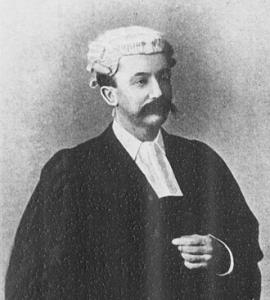
He was an English lawyer, author, lyricist and broadcaster. He was christened and brought up using the name Frederick Edward Weatherly, and appears to have adopted the spelling ‘Frederic’ later in life. He is estimated to have written the lyrics to at least 3,000 popular songs, among the best-known of which are the sentimental ballad “Danny Boy” set to the tune “Londonderry Air“, the religious “The Holy City“, and the wartime song “Roses of Picardy“.
George Ratcliffe Woodward
(December 27, 1848 – March 3, 1934)
He was an English Anglican priest who wrote mostly religious verse, both original and translated from ancient authors. The best-known of these were written to fit traditional melodies, mainly of the Renaissance. He sometimes harmonised these melodies himself, but usually left this to his frequent collaborator, composer Charles Wood.
In 1924, Woodward and Wood published A Cambridge Carol Book: Being Fifty-two Songs for Christmas, Easter and Other Seasons. It included “Ding Dong Merrily on High” and “Past Three O’Clock”
Ding! dong! merrily on high | Carols from King’s 2018
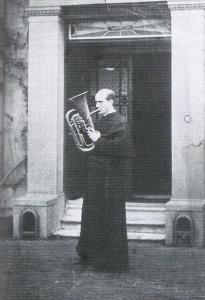
Born in 1850’s
Percy French
(May 1, 1854 –January 24, 1920)
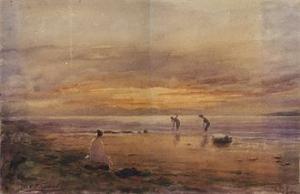
He was an Irish songwriter, author, poet, entertainer and paintera . Are Ye Right There Michael is one of his songs parodying the state of the West Clare Railway system in rural County Clare. It was inspired by an actual train journey in 1896. Because of a slow train and the decision of the driver to stop for no apparent reason, French, though having left Sligo in the early morning, arrived so late for an 8pm recital that the audience had left. The ballad caused considerable embarrassment for the railway company, which was mocked in music halls throughout Ireland and Britain because of the song. It led to an unsuccessful libel action against French.
It is said that when French arrived late for the libel hearing, the judge chided him on his lateness. French reportedly responded “Your honour, I travelled by the West Clare Railway”, resulting in the case being thrown out.
John Philip Sousa
(November 6, 1854 – March 6, 1932)
He was an American composer and conductor of the late Romantic era known primarily for American military marches. He is known as “The March King” or the “American March King”, to distinguish him from his British counterpart Kenneth J. Alford. Among Sousa’s best-known marches are “The Stars and Stripes Forever” (National March of the United States of America), “Semper Fidelis” (official march of the United States Marine Corps), “The Liberty Bell“, “The Thunderer“, and “The Washington Post“.
(March 4, 1856 – January 7, 1940),
She was an American actress. She is credited with having written and composed the lullaby “Rock-a-bye Baby“; despite the words being in print in 1765.The rhyme exists in several versions. One modern example, quoted by the National Literacy Trust, has these words:
Rock a bye baby on the tree top,
When the wind blows the cradle will rock,
When the bough breaks the cradle will fall,
And down will come baby, cradle and all.
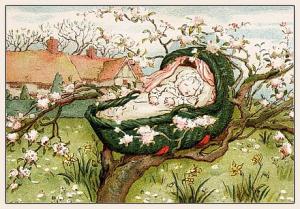
Presenting the new-age lullaby – Rock A Bye Baby, where a mother attempts to tell his son how she feels for him. The beautiful rendition is written by Amitabh Bhattacharya and Julia Gartha, sung by Julia Gartha and Khatija Rahman, and composed by A.R.Rahman.
Harry Dacre
was the pen-name of Frank Dean
(September 1857– July 16, 1922)
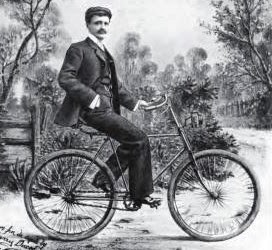
He was a British songwriter best known for his composition “Daisy Bell (Bicycle Built For Two)“.
Anthony Johnson Showalter
(May 1, 1858 – September 14, 1924)
He was an American gospel music composer, teacher and publisher. He was born in Cherry Grove, West Virginia. Showalter was trained in the Ruebush-Kieffer School of Music and was teaching in shape note singing schools by age fourteen. In 1884, he formed the Showalter Music Company of Dalton, Georgia. He was also an elder of the First Presbyterian Church in Dalton.
Showalter’s best known song is “Leaning on the Everlasting Arms“, which was published in 1887. He has generally been credited with writing the music and chorus. However, Showalter’s nephew, Samuel Duncan, is also credited with some of the music for the verses. Elisha Hoffman wrote some of the verses. The song features prominently in the score of Night of the Hunter, serving as a leitmotif for Robert Mitchum‘s character Reverend Harry Powell, and forms about a quarter of the score of the 2010 film True Grit.
Chauncey Olcott
(July 21, 1858 – March 18, 1932),
He was an American stage actor, songwriter and singer of Irish descent Too Ra Loo Ra Loo Ral .
Dan W. Quinn
(c. 1859 – November 7, 1938)
He was one of the first American singers to become popular in the new medium of recorded music. Quinn was a very successful recording artist whose career spanned from 1892 to 1918. Quinn recorded many of his hits in the legendary Tin Pan Alley of New York City.
Katharine Lee Bates
(August 12, 1859 – March 28, 1929)
He was an American author and poet, chiefly remembered for her anthem “America the Beautiful“, but also for her many books and articles on social reform, on which she was a noted speaker.
Carl Boberg
(1859–1940).
He was a Swedish poet, preacher, government official and member of parliament, best known for writing the Swedish-language poem “O Store Gud” (‘O Great God’) from which the English language-hymn “How Great Thou Art” is derived.
Born in 1860’s
Claude Debussy
(August 22, 1862 – March 25,1918)
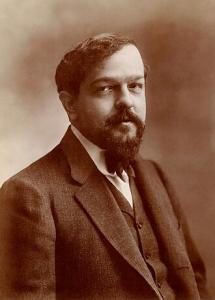
He was a French composer. He is sometimes seen as the first Impressionist composer, although he vigorously rejected the term. He was among the most influential composers of the late 19th and early 20th centuries.
Casey Jones
(March 14, 1863 – April 30, 1900)
He was an American railroader who was killed when his passenger train collided with a stalled freight train in Vaughan, Mississippi.
“The Ballad of Casey Jones“. is a traditional American folk song about Casey Jones.
It tells of how Jones and his fireman Sim Webb raced their locomotive to make up for lost time, but discovered another train ahead of them on the line, and how Jones remained on board to try to stop the train as Webb jumped to safety. It is song number 3247 in the Roud Folk Song Index.
The song helped preserve the memory of Jones’ feat down through the years in its 40 plus versions and enhanced Casey’s legendary status to the extent that he has even become something of a mythological figure like Pecos Bill or Paul Bunyan to the uninformed. Books and pulp magazines about the railroad and its heroes helped to perpetuate his memory as well.
Qi Baishi’s artwork and bibliography
Richard Strauss
(June 11, 1864 –September 8, 1949)
He was a German composer and conductor best known for his tone poems and operas.
(August 16, 1865 –May 1,1910)
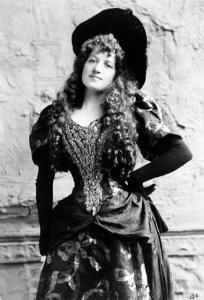
Ta-ra-ra Boom-de-ay is a vaudeville and music hall song first performed by the 1880s. It was included in Henry J. Sayers’ 1891 revue Tuxedo in Boston, Massachusetts. The song became widely known in the 1892 version sung by Lottie Collins in London music halls, and also became popular in France.
The melody was later used in various contexts, including as the theme song to the mid-20th century United States television show Howdy Doody.
Florenz Ziegfeld Jr.
(March 21, 1867 – July 22, 1932)
He was an American Broadway impresario, notable for his series of theatrical revues, the Ziegfeld Follies (1907–1931), inspired by the Folies Bergère of Paris. He also produced the musical Show Boat. He was known as the “glorifier of the American girl”. Ziegfeld is a member of the American Theater Hall of Fame.
Charles K. Harris
(May 1, 1867 – December 22, 1930)
He was a well regarded American songwriter of popular music. During his long career, he advanced the relatively new genre, publishing more than 300 songs, often deemed by admirers as the “king of the tear jerkers“. He is one of the early pioneers of Tin Pan Alley.
Amy Beach,
(September 5, 1867 – December 27, 1944)
She was an American composer and pianist. She was the first successful American female composer of large-scale art music. Her “Gaelic” Symphony, premiered by the Boston Symphony Orchestra in 1896, was the first symphony composed and published by an American woman. She was one of the first American composers to succeed without the benefit of European training, and one of the most respected and acclaimed American composers of her era. As a pianist, she was acclaimed for concerts she gave featuring her own music in the United States and in Germany.
Scott Joplin,
(November 24, 1868 – April 1, 1917)
He was an American composer and pianist. Dubbed the “King of Ragtime“, he composed more than 40 ragtime pieces, one ragtime ballet, and two operas. One of his first and most popular pieces, the “Maple Leaf Rag“, became the genre’s first and most influential hit, later being recognized as the quintessential rag. Joplin considered ragtime to be a form of classical music meant to be played in concert halls and largely disdained the performance of ragtime as honky tonk music most common in saloons.
Richard Wagner’s Son
Richard Wagner
(May 1813 – February 13, 1883)
He was a German composer, theatre director, polemicist, and conductor who is chiefly known for his operas (or, as some of his mature works were later known, “music dramas”). Unlike most opera composers, Wagner wrote both the libretto and the music for each of his stage works.
He is the father of
Siegfried Wagner
(June 6, 1869 – August 4, 1930)
He was a German composer and conductor, the son of Richard Wagner. He was an opera composer and the artistic director of the Bayreuth Festival from 1908 to 1930.
Born in 1870’s
Birdie Blye
(March 24, 1871 – June 23, 1935)
He was an American pianist. At 5 year old she was “an infant prodigy” who was taught by the best teachers in the United States and Europe. At the age of 10, she gave concerts in London and other European cities. She was the only American who ever played at so early an age in orchestral concerts
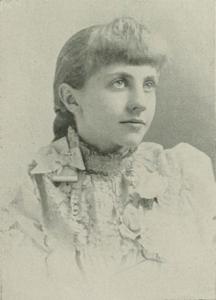
John Wesley Work Jr.
(August 6, 1871 – September 7, 1925)
He was a musicologist, the first African-American collector of folk songs and spirituals, and also a choral director, educationalist singer and songwriter.
Jack Judge John Judge
(December 3, 1872 –July 25,1938)
He was an English songwriter and music-hall entertainer best remembered for writing the song “It’s a Long Way to Tipperary“. Judge originally wrote and sang the song in 1912, but the far more widely known John McCormack acquired greater name recognition with the song.
George Gershwin’s Parents
Moishe Gershwin (Gershwine) (c.1872 – 1932) +
Rosa Gershowitz (Bruskin) (1876 – 1948)
= George Gershwin
(September 26, 1898 – July 11, 1937)
He was an American composer and pianist whose compositions spanned popular, jazz and classical genres. Among his best-known works are the orchestral compositions Rhapsody in Blue (1924) and An American in Paris (1928), the songs “Swanee” (1919) and “Fascinating Rhythm” (1924), the jazz standards “Embraceable You” (1928) and “I Got Rhythm” (1930), and the opera Porgy and Bess (1935), which included the hit “Summertime“.
George Bennard
(February 4, 1873 – October 10, 1958)
He was an American hymn composer and preacher. He is best known for composing the famous hymn, “The Old Rugged Cross“.
Enrico Caruso
(February 25, 1873 –August 2, 1921)
He was an Italian operatic first lyric tenor then dramatic tenor. He sang to great acclaim at the major opera houses of Europe and the Americas, appearing in a wide variety of roles that ranged from the lyric to the dramatic. Generally recognized as the first international recording star, Caruso made around 250 commercially released recordings from 1902 to 1920. Top 36 Enrico Caruso Songs | Highest Chart Hits (playback.fm)
W. C. Handy
(November 16, 1873 – March 28, 1958)
He was an American composer and musician who referred to himself as the Father of the Blues. He was one of the most influential songwriters in the United States. One of many musicians who played the distinctively American blues music, Handy did not create the blues genre but was the one of the first to publish music in the blues form, thereby taking the blues from a regional music style (Delta blues) with a limited audience to a new level of popularity.
Handy used elements of folk music in his compositions. He was scrupulous in documenting the sources of his works, which frequently combined stylistic influences from various performers.
Arnold Schoenberg
(September 13, 1874 – July 13, 1951)
He was an Austrian and American composer, music theorist, teacher and writer. He was among the first modernists who transformed the practice of harmony in 20th-century classical music, and a central element of his music was its use of motives as a means of coherence. He propounded concepts like developing variation, the emancipation of the dissonance, and the “unity of musical space“.
Schoenberg: Gurre-Lieder / Rattle · Berliner Philharmoniker
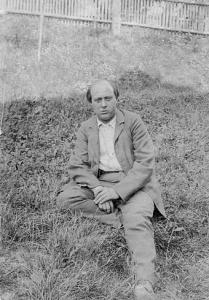
Johan Schoonderbeek
(September 27, 1874 – (March 3, 1927)
Was one of the founding members of
Netherlands Bach Society
The Netherlands Bach Society is the oldest ensemble for Baroque music in the Netherlands, and possibly in the world. The ensemble was founded in 1921 in Naarden to perform Bach‘s St Matthew Passion on Good Friday and has performed the work annually since then in the Grote of Sint-Vituskerk (Great Church or St Vitus Church). From 1983 until 2018, Jos van Veldhoven was the artistic director and conductor. Shunsuke Sato became artistic director in June of 2018 and resigned from the position in June of 2023.
The ensemble reached its 100th anniversary in 2021. In honor of the milestone, the Society started publishing a new and freely accessible recording every two weeks, including HD video of all 1080 works of Johann Sebastian Bach, performed by members of the ensemble and guest musicians under the title All of Bach.
Wallace Hartley
(June 2, 1878 – April 15, 1912)
He was an English violinist and bandleader on the Titanic during its maiden voyage. He became famous for leading the eight-member band as the ship sank on 15 April 1912. He and the rest of the band died.
Beyond The Titanic. Ep 8. The Missing Violin. Wallace Hartley
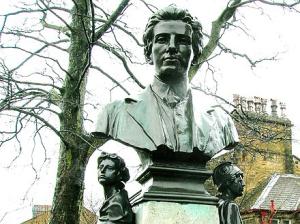
George Michael Cohan
(July 3, 1878 – November 5, 1942)
He was an American entertainer, playwright, composer, lyricist, actor, singer, dancer and theatrical producer.
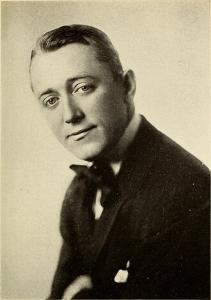
Cohan began his career as a child, performing with his parents and sister in a vaudeville act known as “The Four Cohans”. Beginning with Little Johnny Jones in 1904, he wrote, composed, produced, and appeared in more than three dozen Broadway musicals. Cohan wrote more than 50 shows and published more than 300 songs during his lifetime, including the standards “Over There“, “Give My Regards to Broadway“, “The Yankee Doodle Boy” and “You’re a Grand Old Flag“. As a composer, he was one of the early members of the American Society of Composers, Authors, and Publishers (ASCAP). He displayed remarkable theatrical longevity, appearing in films until the 1930s and continuing to perform as a headline artist until 1940.
Known in the decade before World War I as “the man who owned Broadway”, he is considered the father of American musical comedy. His life and music were depicted in the Oscar-winning film Yankee Doodle Dandy (1942) and the 1968 musical George M!. A statue of Cohan in Times Square, New York City, commemorates his contributions to American musical theatre.
Ernest Ball
(July 22, 1878 – May 3, 1927)
He was an American singer and songwriter, most famous for composing the music for the song “When Irish Eyes Are Smiling” in 1912. Ball was not Irish although the lyricists were.
Jack Norworth
(January 5, 1879 – September 1, 1959)
He was an American songwriter, singer and vaudeville performer.
Norworth is credited as writer of a number of Tin Pan Alley hits. He wrote the lyrics to “Take Me Out to the Ball Game” in 1908, his longest-lasting hit. It wasn’t until 1940 that he witnessed a major league baseball game. The song placed at number 8 on the “Songs of the Century” list selected by the National Endowment for the Arts and the Recording Industry Association of America.
His “Shine On, Harvest Moon” was a bigger hit at the time.
Thomas Beecham
(April 29, 1879 – March 8, 1961)
He was an English conductor and impresario best known for his association with the London Philharmonic and the Royal Philharmonic orchestras. He was also closely associated with the Liverpool Philharmonic and Hallé orchestras. From the early 20th century until his death, Beecham was a major influence on the musical life of Britain and, according to the BBC, was Britain’s first international conductor.
From 1926 to 1932, Beecham made more than 70 discs, including an English version of Gounod’s Faust and the first of three recordings of Handel’s Messiah.
Sir Thomas Beecham: Interview and Rehearsal
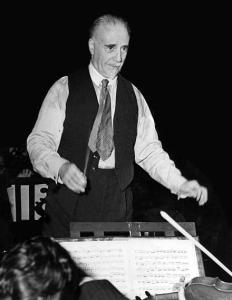
Henry W. Armstrong
(July 22, 1879 – February 28, 1951)
He was an American boxer, booking agent, producer, singer, pianist, and Tin Pan Alley composer His biggest hit was “Sweet Adeline“, written in 1903 with Richard H. Gerard. His 1905 sentimental ballad “Nellie Dean” became the signature song of the British music hall singer Gertie Gitana, and subsequently a popular British pub song
Joe Hill (activist)
(October 7, 1879 – November 19, 1915)
He was born Joel Emmanuel Hägglund and also known as Joseph Hillström, was a Swedish-American labor activist, songwriter, and member of the Industrial Workers of the World (IWW, familiarly called the “Wobblies”). A native Swedish speaker, he learned English during the early 1900s, while working various jobs from New York to San Francisco. Hill, an immigrant worker frequently facing unemployment and underemployment, became a popular songwriter and cartoonist for the union. His songs include “The Preacher and the Slave“[4] (in which he coined the phrase “pie in the sky“), “The Tramp“, “There Is Power in a Union“, “The Rebel Girl“, and “Casey Jones—the Union Scab“, which express the harsh and combative life of itinerant workers, and call for workers to organize their efforts to improve working conditions.
In 1914, John G. Morrison, a Salt Lake City area grocer and former policeman, and his son were shot and killed by two men. The same evening, Hill arrived at a doctor’s office with a gunshot wound, and briefly mentioned a fight over a woman. He refused to explain further, even after he was accused of the grocery store murders on the basis of his injury. Hill was convicted of the murders in a controversial trial. Following an unsuccessful appeal, political debates, and international calls for clemency from high-profile figures and workers’ organizations, Hill was executed in November 1915. After his death, he was memorialized by several folk songs. His life and death have inspired books and poetry.
There Is Power In A Union by Joe Hill
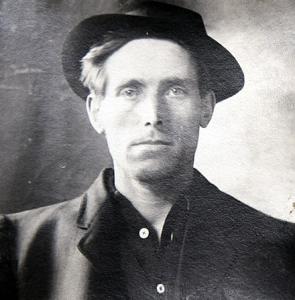
Born in 1880’s
International Mozarteum Foundation
1880 – present
Founded in 1880 in Salzburg with its primary concern being the life and work of Wolfgang Amadeus Mozart. Closely affiliated with the Mozarteum University Salzburg, it was preceded by the Cathedral Music Association and Mozarteum of 1841. It collects Mozart memorabilia, maintains the Mozart library (the Bibliotheca Mozartiana), the Mozart birthplace and other Salzburg locations linked with Mozart. The Foundation also promotes research regarding Mozart and administers various awards such as the Mozart Medal, the Preis der Internationalen Stiftung Mozarteum, the Lilli Lehmann Medal, and presents up to twenty other performances year-round.
IMF turned 9 in 1889
Igor Stravinsky
(June 17, 1882 – April 6, 1971)
He was a Russian composer and conductor with French citizenship (from 1934) and American citizenship (from 1945). He is widely considered one of the most important and influential composers of the 20th century and a pivotal figure in modernist music.’
Harry McClintock
(October 8, 1884 – April 24, 1957)
Also known as “Haywire Mac”, he was an American railroad man, radio personality, actor, singer, songwriter, and poet, best known for his song “The Big Rock Candy Mountains“.
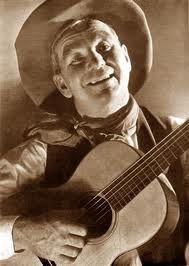
Harry McClintock – The Big Rock Candy Mountains [ORIGINAL] – [1928].
Irving Berlin
(May 11, 1888 – September 22, 1989)
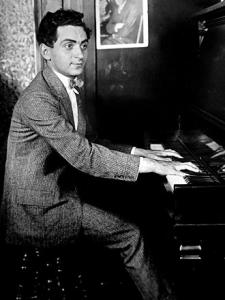
He was an American songwriter. His music forms a large part of the Great American Songbook. Berlin received numerous honors including an Academy Award, a Grammy Award, and a Tony Award. He also received the Presidential Medal of Freedom from President Gerald R. Ford in 1977. Broadcast journalist Walter Cronkite stated he “helped write the story of this country, capturing the best of who we are and the dreams that shape our lives”.
Next Time on
HOARATS
To Understand
What I love and How I Write About History
Hit the Link Above.
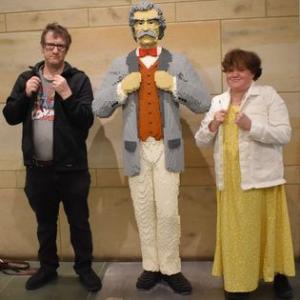
To understand about this particular series I’m writing about, please read
The Catholic Bard’s Guide To History Introduction
And to view a historical article click on



